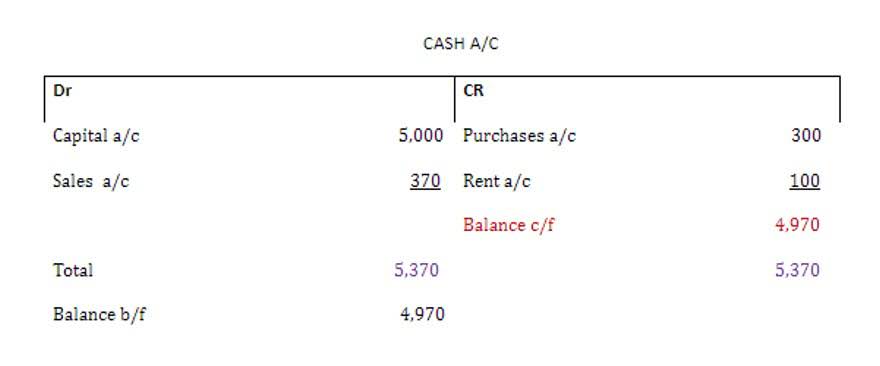
Significant changes in other comprehensive income may result from market volatility affecting foreign currency adjustments or investment valuations. Companies operating in multiple jurisdictions might experience pronounced equity shifts due to currency fluctuations or changes in international accounting standards. Identifying these influences helps stakeholders assess whether equity changes represent temporary anomalies or long-term risks, supporting better investment and governance decisions.
What Does the Statement of Shareholder Equity Include?
After all activities have been entered, each column is summed vertically to arrive at the ending balance for each equity component. The rows are also cross-footed, meaning the changes across each row should sum to the total change in the far-right column. Finally, the ending balances of each column are added horizontally to calculate the total ending stockholders’ equity, which must match the equity total on the period-end balance sheet.

1 Stockholders’ equity overview
A statement of shareholders’ equity can help you value your business and plan for the future. It can reveal whether you should borrow money to open another business location, cut costs or profit from a sale. It can also help you find and attract investors — who will undoubtedly want to review this statement before injecting capital into your business. Stan Gregor, CEO of Summit Financial LLC, emphasized that a statement of shareholders’ equity provides crucial financial accounting information about a business’s value. Since the corporation’s shares of stock are publicly traded, the consolidated financial statements must be audited by a registered firm of independent certified public accountants. Sophisticated investors and lenders will read closely the notes to the financial statements.

How Is Shareholder Equity Calculated?
Key points include understanding the components of stockholders’ equity, the impact of ownership changes, and the importance of capital structure. Accurate reporting and analysis of equity are crucial for assessing a company’s financial health. This statement helps in assessing the impact of equity transactions, such as issuing new shares or repurchasing existing ones, on the overall value of the company. In summary, the stockholders’ equity statement serves as a vital tool for both Financial Forecasting For Startups management and investors to monitor and evaluate the company’s financial strategies and ownership dynamics.
It can inform you how well your company is run

Conversely, share repurchases can consolidate ownership but require the company statement of stockholders equity to use its resources, potentially affecting liquidity. This represents the profit or loss during the period as reported in the statement of comprehensive income and is attributable to stockholders. This extract details the movements in shareholders’ equity (or stockholders’ equity) from the start of the period, January 1st 2016 to the end of the period, December 31st 2016. The actual number of shares issued (also called issued share capital) will not be more than the authorized share capital.
Accumulated other comprehensive income (loss)

Shaun Conrad is a Certified Public Accountant and CPA exam expert with a passion for teaching. After almost a decade of experience in public accounting, he created MyAccountingCourse.com to help people learn accounting & finance, pass the CPA exam, and start their career. Our dedicated experts research and test SMB solutions so you assets = liabilities + equity can make smart, confident decisions. With business.com+, members get dedicated support, exclusive deals and expert advice.
- This content is for general information purposes only, and should not be used as a substitute for consultation with professional advisors.
- The statement’s heading should include the company name, the statement title, and the accounting period to prevent confusion when reviewing financial statements later.
- Hence, while there may be short term implications, the long-term positive outcomes are substantial.
- Companies opt to take this route particularly when they need to raise funds for growth initiatives but are reluctant to take on more debt.
- An important metric that is available from the income statement of a retailer or manufacturer is the gross profit.
- Additionally, companies issue this statement as part of their balance sheet to give investors transparency about why accounts have changed.
- Second all dividends and net losses are subtracted from the equity balance giving you the ending equity balance for the accounting period.
- Retained earnings, as the name suggests, are the amount of net income that a company has kept (retained) over the years after paying off dividends.
- By examining these statements, stakeholders can make informed decisions about the company’s long-term viability and potential for return on investment.
- It is a key component of a company’s balance sheet and indicates the ownership value held by shareholders.
The statement of shareholders’ equity gives investors a much better understanding of how the individual equity accounts have changed during the period. This is distinct from the income statement which can provide details of sales, and profitability for the period. The statement of shareholders’ equity gives us the details of any capital raising and repatriating, as well as other items which impact the equity accounts directly (and are not included in the income statement). Contributed capital, or paid-in capital, represents the total value of cash and other assets shareholders invest in the company in exchange for stock.

